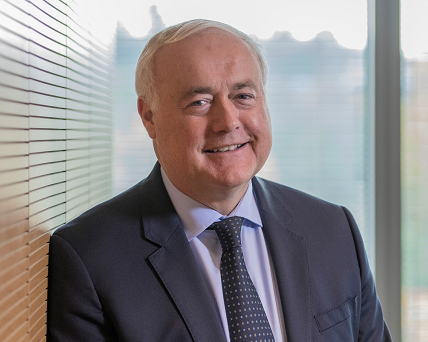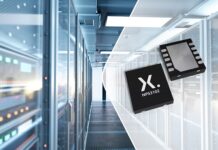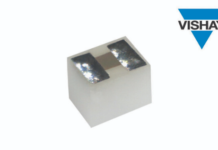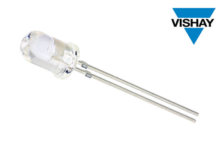
STMicroelectronics, the global semiconductor leader, is known for its innovative, energy-efficient products, solutions and sustainable business model is all set to achieve a $20B+ revenues ambition between 2025 and 2027. ST has already achieved $12.8B in revenues in 2021 and is on track to reach about $15B in revenues for 2022.
During a virtual media event, Jean-Marc Chery, President and Chief Executive Officer, STMicroelectronics shares company actions, plans and strategies for continued sustainable profitable growth. He discussed ST’s key long-term enablers, strategic focus, high-growth areas and the company’s approach toward sustainability. He also shares ST’s most advanced manufacturing facilities and companies’ investment in digital transformations like AI, ML, Big data and Digital twin to name a few. Below are excerpts from the virtual media engagement session.
Q: Kindly brief on STMicroelectronics’s Key Long-Term Enablers?
Jean-Marc Chery: Our strategy stems from three long-term enablers: smart mobility; power and energy; the Internet of Things and connectivity. These enablers are the driving factors for ST’smarket position, its customer engagements, innovation processes, Product & IP design and technology R&D efforts and manufacturing investments.
Under Smart Mobility, ST supports car manufacturers to make driving safer, greener and more connected for everyone. In past years ST has developed business across the automotive value chain – with car makers, Tier 1 and 2 players.
Considering Power and Energy, I pushed myself heavily on power and energy because the world and the society will need a solution, to address one of the huge challenges of the future to continue to grow into a world while respecting the planet, and be more energy efficient in terms of power and energy consumption.
ST supports the proliferation of smart, connected IoT devices with products, solutions & ecosystems. Our ambition considers a high-single-digit SAM growth in the next few years across all the end markets we serve, largely driven by the long-term enablers.
Q What are the High Growth Areas for ST?
Jean-Marc Chery: Talking about ST’s high growth areas which comprise Automotive, Industrial and Personal Electronics. These will boost the revenue growth of the company and hence ST is investing consistently in business development, applications support, products and IP design, technology R&D and people skills and talent.
Q: Can you share some pointers to support the Automotive market growth of ST?
Jean-Marc Chery: ST provides key enabling technologies and products to support its unprecedented transformation driven by electrification and digitalization.
- ST’s Silicon Carbide MOSFET is supporting 20 car makers in power train electrification.
- ST has been running over 100 programs with both industrial and automotive which shows the path to achieving the $1B SiC revenue milestone in 2023.
- ST carmaker customers for SiC include BYD, Geely, Great Wall, Hyundai and XPeng among many others. And Tier1 customers include Delta, Huawei, Inovance, Quanta, Shinry, Sungrow, and Vmax and so on. ST ~30% of SiC business customers are from Asia.
- Discussing Car digitalization, we are supporting our customers’ move to ADAS and software-defined vehicles. We cover the full system critical specifications of high-computing power, real-time control needs, power management and sensing solutions.
Q Industrial Market is very huge, how does ST see its different domains and what are your offerings for the Asian market?
Jean-Marc Chery: Along with the automotive market, the industrial market is alsoundergoing a deep transformation which shows a high growth opportunity for ST. The growing digitalization of devices and systems and their integration with the cloud reflect high prospects. Energy Management and Power efficiency improvements, including power efficiency of manufacturing machines, energy infrastructure and transportation, Home Appliances, as well as battery-based electrification of devices and systems also support it.
ST focuses on three main domains under the industrial market,
- Factory automation and Industrial Infrastructure, the largest part, which includes automation, power and energy, transportation, test & measurement, and lighting.
- Consumer industrial, which includes home appliances, smart buildings and homes, and power tools.
- A more specialized part addressing, for example, healthcare and aerospace.
Considering the Asian market, ST has established three Industrial Competence Centers to support its customers:
- The Power and Energy Competence Center focuses on energy generation and distribution, metering, wireless charging, and lighting.
- The Motor Control Competence Center for professional appliances, industrial motor control, transportation, and consumer products.
- And the Automation Competence Center for Smart homes, buildings and cities, smart agriculture, and industrial automation.
ST’s unique competitive advantagein Industrialis based on our ability to offer a complete product portfolio for embedded processing, power and analog solutions, and sensors, as well as the competence to bring this all along together in optimized products and solutions for our customers.
Q: According to you what are the driving factors in Personal Electronics for ST and what impact it will have on the Asian market?
Jean-Marc Chery: Personal Electronics remains an exciting industry for ST to participate in, smartphones and connected devices will continue to be our focus.
ST holds strong leadership in Optical Sensing Solutions and MEMS sensors, secure solutions, wireless charging and selected power management ICs which in turn justify its focus on focus on selected high-volume smartphone applications and accessories.
ST also address high-volume applications like smart watches, through its well-known STM32 microcontrollers.
Our strong customer engagements position us well in Personal Electronics also for the future to contribute to our $20B+ revenues ambition.
Focusing on the Asian market, ST sees strong dynamism in the China smartphone market with 5G smartphone opportunities developing in the coming years and ST is ready with its state-of-the-art IP and technologies in differentiated products or custom solutions. The gaming industry as well as wearables, accessories, and personal-care devices are other growing opportunities where ST finds its place.
ST is also participating selectively in the Communications Equipment, Computers and Peripherals market addressing high-volume applications with differentiated products or custom solutions.
Q: Kindly share about the ST’s wafer Manufacturing and Wide Bandgap production?
Jean-Marc Chery: ST is expected to spend $3.2-3.5B CAPEX in manufacturing to support its growth plans and improve competitiveness in the market. ST is transforming its manufacturing footprint with strategic investments in 300mm wafer manufacturing and vertically integrated Wide bandgap production.
300mm wafer fab In Crolles, France ST already holds a strong positionas a high-volume manufacturer with CMOS-based technologies including embedded non-volatile memory, RF mixed Signal or other technologies ranging from 90nm down to 28nm. In Agrate, Italy ST continued to invest in its new fabwhile expanding to analog and speciality technologies.
ST is rapidly growing its Wide Bandgap manufacturing with SiC and GaN. ST isleading the technology race moving soon to 200mm for SiC. ST is moving towards its target of 40% internal substrate sourcing with a pilot line delivering 150mm and 200mm substrate. While progressing in GaN, ST has completed its internal 200mm manufacturing line and epitaxy centre in Tours, France. The company is already in production on powerGaN with TSMC and anticipates starting volume production next year (in 2023).
Elsewhere in Asia, we continue to invest in both capacity and technology in our back-end fabs located in Malaysia, China and the Philippines to support future growth.
We are continuously investing in our business support and enabling functions to optimize our supply chain capabilities to face incremental challenges and constraints of our industry with increasing complexity. We have been heavily investing in machine learning and artificial intelligence solutions, big data analytics, digital twin models.
Q: What is ST’s approach toward Sustainability and how far have you reached?
Jean-Marc Chery: Embedded into our ambition, we are committed to sustainability for all our stakeholders: here we are investing to further accelerate our efforts by creating technology for a sustainable world, in a sustainable way.
ST along with its local partner SP Group is going to build a district cooling system for our fab; it will be the largest industrial DCS project in Singapore. The project is worth $370M over 20 years, to provide chilled water as a service for both manufacturing operations and offices. It will be operational in 2025. It will save 20% in cooling-related electricity consumption annually, and a reduction of carbon emissions by up to 120,000 tons per year. Thus is progression to achieve the goal of carbon neutrality by 2027.
Q: What do you think are the biggest challenges that the semiconductor industry will face in the next 5 years? Can you share your view of the transforming potential of Electric vehicles and what is ST’s focus for this sector in terms of technology?
Jean-Marc Chery: The main challenge of the semiconductor industry is so wide that we have to break it down in blocks as we can break down electronics in big blocks that we call the standalone. The standalone is user-end electronics or is a computer or smartphone, tablet and related accessories. And then you have all the infrastructure equipment, and communication that benefits all of the communities, like cells, switcher, base stations, and all these stuff. And then comes public utility where the electricity is a key enabling technology but it’s not the superstar of the application. The superstar of car is mobility, and it is not the consumer experience related to software and hardware of electronics. And as you see the application are the same. I have to say that the main challenge for the overall semiconductor industry is the capability to address successfully both domains at the same speed and services, because during the past six or seven quarters, we experienced a shortage of solutions. Some customer perception is right or wrong, because of the assumption that the automotive is penalized by smartphones, then industry or market is penalized by utilities and so on, so forth.
So, the semiconductor is a key enabling technology. The main challenge for us is to support the transformation, innovation and digitalization of our customers very well, and we know that there are different companies, like Intel, NVIDIA who engage in the computer, Qualcomm and Broadcom more in communication, and ST, ADI, TI, NXP, Infineon in each field of electronics. But sometimes the manufacturing capacity, the supply chain, substrates and so on is the main challenge because basically we know that the semiconductor market will double. That will go above 1 trillion by 2030. They will be supplied equally to enable a transformation. And it’s vital for society. Because of what the semiconductor will enable better consumer experience, whatever reality, virtual reality and so on and so forth. One of the key missions of the semiconductors and electronics is the transformation of electrification and decarbonization of the industry and also automation of the industry. So, it’s a very important challenge. Of course, to address this challenge, we must manage in a very well-balanced way. Last but not the least, it is out of our control, when I answered the first question, we will have to address this challenge. In ST, we have been investing a lot of money in innovation, in technology development, in the IP development, product, and capacity in manufacturing. At the moment, it is showing less predictability, tension, and sign of decoupling – everybody wants to have a fab and support. This is a challenge of the industry. So equally balance the support of the big domains of the electronics, continue to innovate, continue to perform, continue to reduce the cost of production of solutions, but for an amount of time we are in a world which is showing some big tension. So, this is the great challenge we have to achieve the near future.















